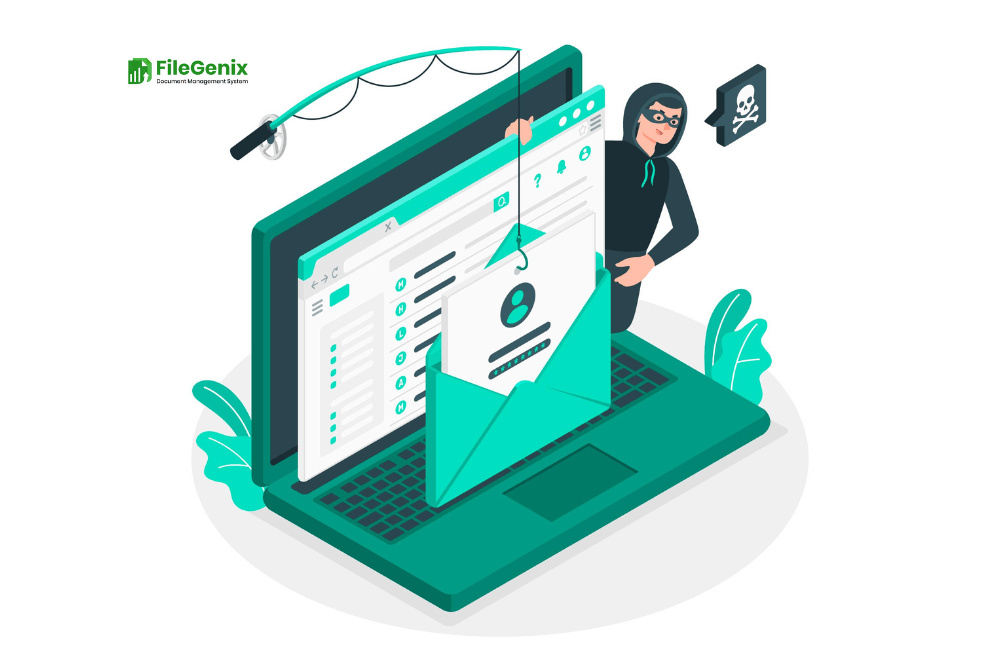If you search online, you’ll find thousands of news reports about data breaches and the significant losses they have caused over time.
According to the IBM Data Breach Report 2024, 604 organisations and 3,556 cybersecurity and business leaders have already been hit by data breaches this year alone. Alarmingly, 1 in 3 data breaches in 2024 involved shadow data—data that exists outside centralized document management systems and is not controlled by IT teams.
But here’s the point many overlook: data does not exist in isolation. It is embedded in documents—contracts, invoices, reports, emails, and more.
Documents are the bedrock of your organization’s data, but they are usually forgotten by companies when they only focus on security measures for data.
That’s where FileGenix comes in. FileGenix, an Electronic Document Management System (eDMS), offers a robust solution to secure your documents, which, in turn, safeguards your critical business data.
In this blog, we’ll explore how effective document management is crucial to prevent data breaches and protect your organization against cyber threats.
Escalating Threat: The Case of Data Breaches
The latest statistics show the alarming rate of data breach occurring within industries.
- Financial Services, Banking, and Insurance: Incidents increased from 1,112 in 2003 to 1,422 in 2023.
- Healthcare & Medical Providers: Cases increased from 360 to 1,080 in two decades.
- Manufacturing, Technology & Communications: Cases increased from 571 to 1,299.
These breaches are more than just stolen statistics or reports; they also include documents containing sensitive data such as patient information, financial plans, and intellectual property. Protecting papers is thus the first line of defence against data breaches.
Why Are Documents the Backbone of Data?
Documents, whether digital or physical, are organized sets of data. They contain everything from Personal Identifiable Information (PII) to business-critical insights. For example:
- Contracts carry the financial information, agreements, and legal terms.
- Medical records carry patient histories, diagnoses, and treatments.
- Reports and invoices hold proprietary and financial data.
Inadequate document management puts such assets vulnerable to being exposed to:
- Cyberattacks (ransomware, phishing)
- Insider threats (misuse or accidental sharing of documents)
- Physical threats (theft or natural disasters)
Not a matter of choice but one to adopt, Document Management Systems such as FileGenix in securing data right from its origin.
How FileGenix Guarantees Document and Data Security
FileGenix’s Electronic Document Management Software (eDMS) is particularly designed to safeguard both the documents and the sensitive information they carry. Here’s how:
1. Advanced Security Features
- Role-Based Access Control (RBAC): Some papers have restricted authorized accesses limited to only accredited persons; that will reduce the leakage of data on involuntary or unauthorized access.
- Encryption: FileGenix will encrypt both file-at-rest and file-in-transit. Files that are intercepted can never be read.
- Audit Trails: All access, change, and movement of the document is reported for auditing and compliance purposes.
2. Centralized Document Repository
Scattered and unmanaged documents are a breeding ground for shadow data. FileGenix offers a centralized repository for all your documents that are managed, secured, and easily retrievable.
A centralized approach eliminates all unmanaged files that represent a risk, often opening the door to breaches.
3. Document Classification for Better Security
FileGenix automatically classifies documents according to their sensitivity, such as PII, financial records, or intellectual property, to enforce appropriate security measures. This eliminates human error and ensures critical documents receive the protection they deserve.
4. Workflow Automation
Manual processes where sensitive documents come in for approval or review expose a risk of a breach. FileGenix works to streamline workflows by:
- Consistent document handling.
- Faster approvals and processing.
- Reduced manual errors that compromise document security.
5. Safe Collaboration and Resource Sharing
Collaboration is essential but can compromise document integrity. FileGenix offers:
- End-to-end file encryption ensures that your documents shared are safe.
- Secure Messaging Tools: Allows teams to collaborate safely without risking document leaks.
How FileGenix Mitigates Risks Proactively
FileGenix is not only about blocking today’s threats but preparing the organization for tomorrow’s surprise.
- Robust Data Backups: It protects against any form of data loss either via breach or disaster by allowing protected backups for fast recovery.
- Scalable Solutions: No matter whether it is small businesses or big companies, FileGenix makes things easy and secure for any kind of growth.
- Regulatory Compliance: FileGenix makes compliance with standards such as GDPR, HIPAA, and other industry regulations easy by providing comprehensive reporting and audit capabilities.
Document Management Is Data Management
The organizations undermine the importance of document security, since they only concentrate on data systems such as the servers or databases.
Still, it is the documents that carry raw, valuable data hence equally important. A leaked document would expose sensitive information and produce devastating effects such as:
- Financial losses
- Legal penalties
- Reputational loss
This will be eliminated by integrating FileGenix’s DMS Solutions into your data security strategy, which means taking a holistic approach in the protection of both documents and the data they contain.
Conclusion
With growing cyber threats, securing your documents is where data protection starts. FileGenix’s Electronic Document Management Software, or eDMS, is a one-stop-shop solution to manage, protect, and streamline your documents while protecting sensitive data.
Using FileGenix isn’t a simple investment in document management; it’s a process for putting your organization better on notice against cyber threats. Leave the unsecured documents of your data security strategy unattended.




